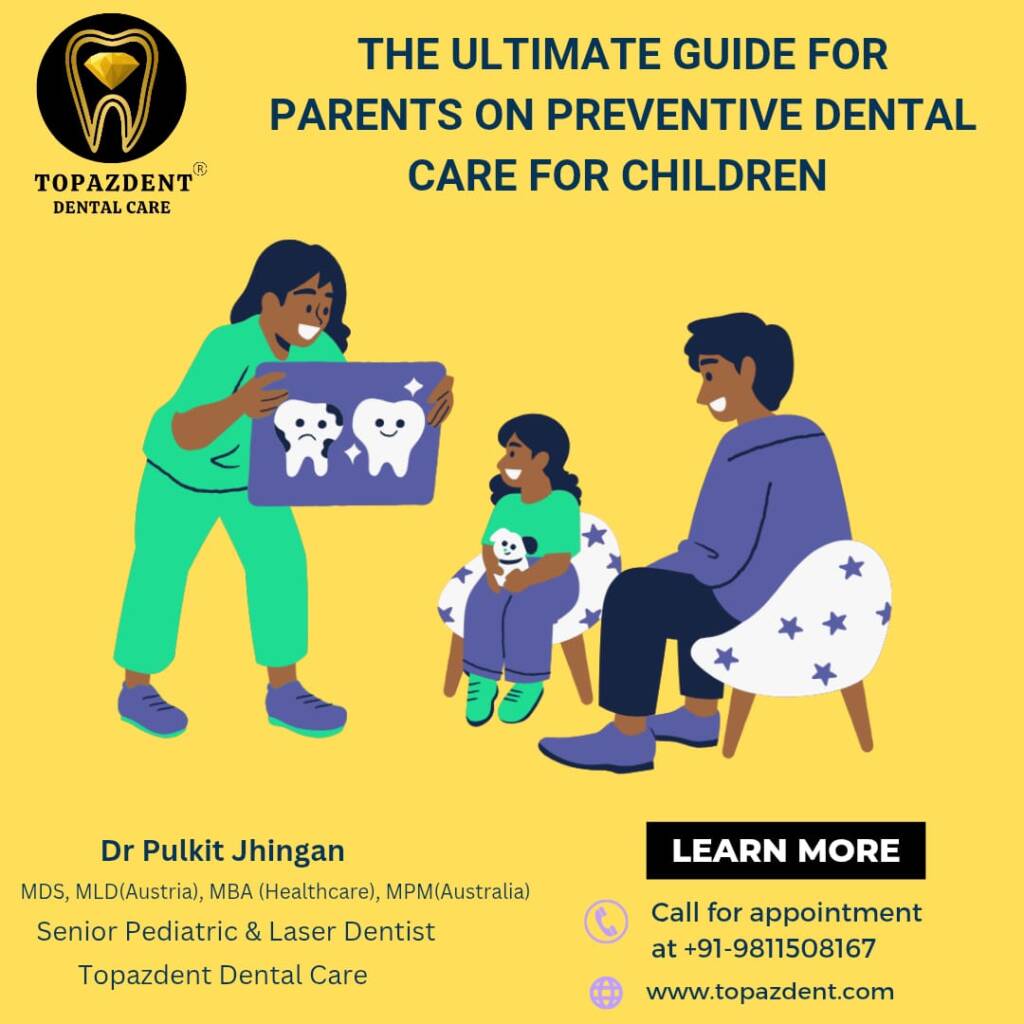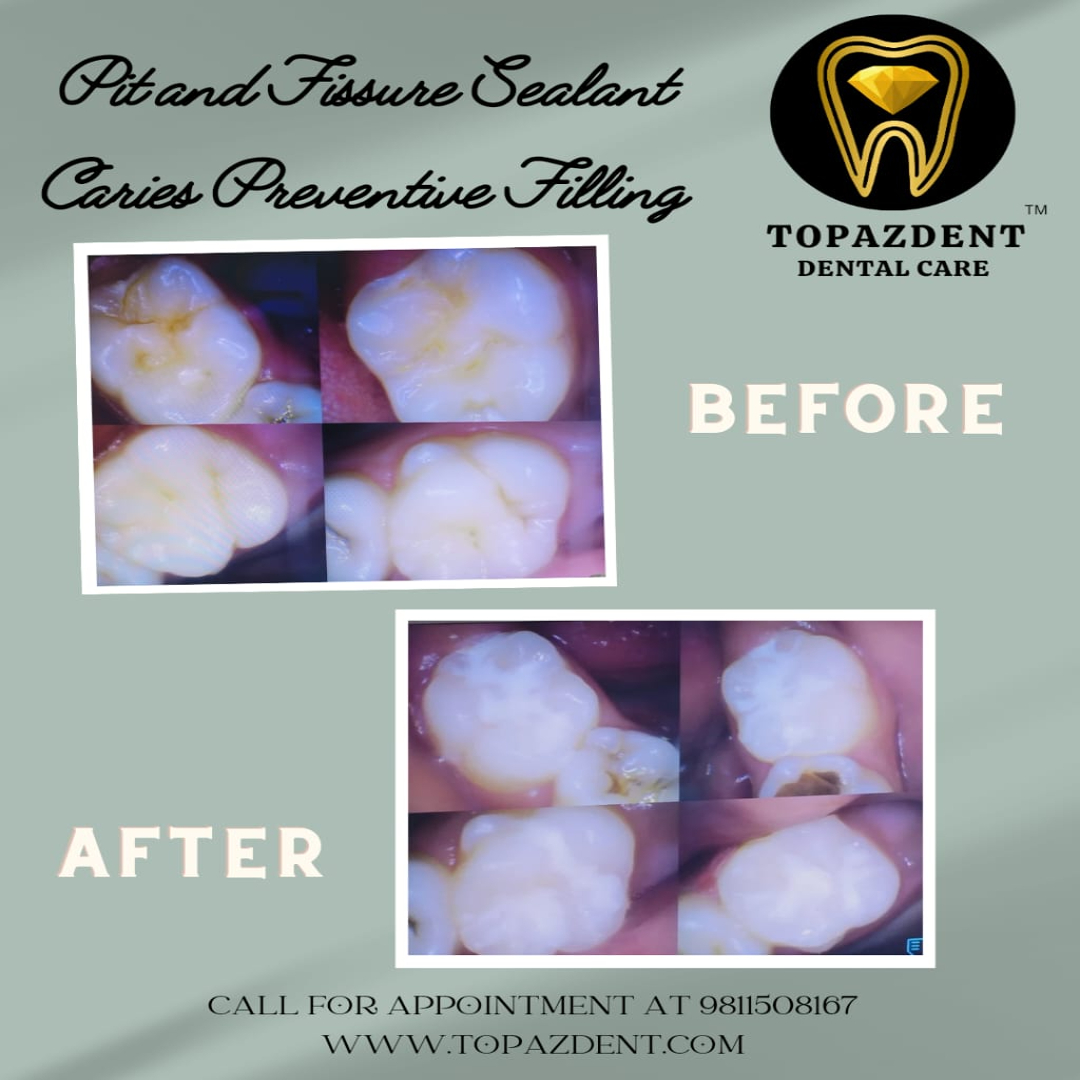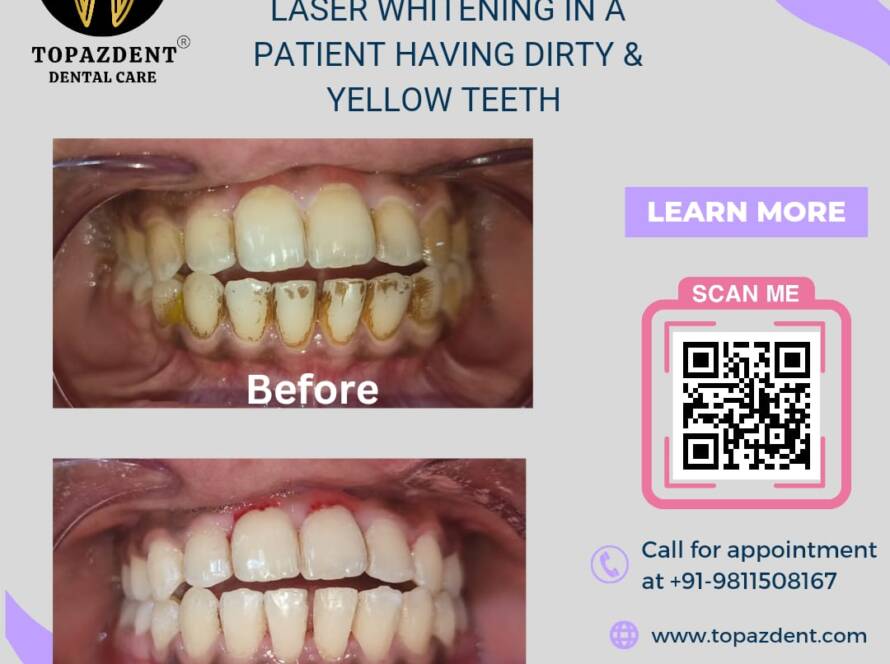In terms of your child’s overall health, oral hygiene is not exactly the first thing you think about. However, good dental habits will need to be developed early to have healthy teeth and gums for life. While preventive dental care can help prevent cavities and gum diseases for your child, it plays a vital role in their health. This guide explores the significance of preventive dental care for kids, practical advice for parents, and cutting-edge techniques in pediatric dentistry.

What Does Child Preventive Dental Care Involve?
Preventive dental care is about maintaining healthy teeth and gums with proactive action rather than reactive treatment. It includes routine dental visits, good oral hygiene habits, and a healthy diet to prevent common dental problems such as cavities, periodontal disease, and tooth decay.
Core components of preventive dental care comprise of:
- Routine Cleaning & Examination
- Fluoride Treatments
- Dental Sealants
- Providing Guidance on Oral Health Care
- Tips for a Healthy Diet and Nutrition
So, why is preventive dental care important for children?
Children’s teeth are more susceptible to decay than adult teeth. Thinner enamel, thicker diets and the honing of oral hygiene habits all contribute. Preventive dental care helps:
- Prevent Cavities: Regular dental cleanings and fluoride treatments can help prevent cavities.
- Encourage Good Habits: Teaching children about oral hygiene early creates good habits for a lifetime.
- Detect Early Issues: The dentist may detect problems such as gum disease or misaligned teeth before they become problematic.
- Save Up: Someone can cure you is always much more expensive than prevention for advanced dental caries.
- Great for General Health: There are links between poor oral health and other medical conditions such as diabetes or heart disease.
How Can Parents Keep Their Kids’ Dental Health in Tip-Top Shape?
- Start Early
Dental hygiene should start as soon as your child’s first tooth emerges. Wipe their gums with a soft, damp cloth and switch to a baby toothbrush when more teeth appear.
- Brushing and Flossing
• Brushing: Show your child how to brush with fluoride toothpaste twice a day. For kids under age 3, a rice-sized dot; for older kids, a dot the size of a pea is enough.
• Flossing: Teach your child to floss to remove food and plaque between teeth, once their teeth touch.
- Regular Dental Check-ups
By a child’s first birthday, schedule his or her first dental visit. Going every six months gives the dentist an opportunity to keep track of their oral health and take care of issues as they arise.
- Balanced Diet
Reduce sweets and sugary drinks — these cause tooth decay. To strengthen teeth, encourage your child to consume calcium-rich foods (such as milk, cheese and yogurt).
- Dental Sealants
Dental sealants are thin, protective coatings placed on the chewing surfaces of molars. They stop food and bacteria from getting stuck, helping to prevent cavities.
- Fluoride Treatments
Transmission Fluoride strengthens tooth enamel; it protects against decay. Ask your dentist about professional fluoride treatments, and make sure your child drinks fluoridated water.
- Mouthguards
Custom-fitted mouthguards can protect your child’s teeth from getting injured if they play sports.
Children Dental Problems and How Preventive Treatment Help
- Tooth Decay
Tooth decay, or cavities, is the most common dental problem in children. Good brushing, flossing and fluoride treatments greatly lower the risk.
- Gum Disease
Poor oral hygiene can cause gingivitis, the early form of gum disease. Brushing correctly and having cleanings done professionally can save you from gum problems.
- Crowded Teeth (Malocclusion)
Preventive dental care includes monitoring your child’s jaw development and early orthodontic intervention if necessary.
- Enamel Erosion
Enamel can be eroded by acidic foods and drinks. Enamel loss is prevented through a balanced diet and fluoride treatments.
- Thumb Sucking and Pacifier Use
Extended thumb sucking or pacifier use can cause problems in tooth alignment and jaw development. Such habits can be remedied with a little guidance from dentists.
Recent Developments in Pediatric Preventive Dentistry
The specializtion of pediatric dentistry is committed to continually evolving to provide the most effective dental care in a child-friendly manner. Here are a few of the more exciting developments:
- Laser Dentistry Laser technology makes dental treatments virtually pain-free and immensely wield precision, so the use of anesthesia becomes less necessary.
- Silver Diamine Fluoride (SDF) One of the less invasive treatments involves using Silver Diamine Fluoride (SDF) to stop cavities from developing larger, and to prevent new ones from forming.
- Teledentistry– Virtual consultations offer parents the ability to communicate with pediatric dentists from home.
- Smart Toothbrushes Interactive mobile app-enabled toothbrushes with built-in sensors make the teeth-brushing experience both fun and effective for kids.
- Biocompatible Materials New sealants and fillings are made from innovative materials that are safe, durable, and environmentally friendly.
What Makes Topazdent Dental Care the Perfect Place for Your Child For a Healthy Smile
Topazdent Dental Care is dedicated to providing high-quality preventive dental for children. With a proven track record, our child-friendly environment and specialized pediatric dentists ensure that each visit is a pleasant one.
Services We Offer:
- Comprehensive dental exams
- Fluoride treatments and professional cleanings
- Dental sealants placement
- Teaching on how to keep the mouth clean
- Sport-specific, custom-fit mouthguards
Why Choose Topazdent?
• State-of-the-art technology
• Kind and experienced doctors
• Teach the patient and ensure patient comfort
• Custom care plans for each child
Frequently Asked Questions About Pediatric Preventive Dental Care
Q: When should my child first visit the dentist?
A: Your child’s first dental visit should occur within six months of their first tooth coming in.
Q: What is the frequency of my child’s dental visits?
A: Every 6 months dental checkup visit for low caries risk children and every 3 months dental visit for high dental risk children.
Q: Is fluoride harmful to children?
A: Yes, and fluoride is both safe and effective in preventing tooth decay when applied in appropriate amounts.
Q: What are dental sealants and do my kids need them?
A: Dental sealants are thin protective coatings that are placed on molars to help prevent cavities. They are especially advised to be placed on kids who have deep grooves in their teeth.
Q: What can I do to ease dental visits for my child?
A: Use a kid-friendly dental office, talk in advance with your child about what to expect, and keep upbeat about the process.
Conclusion
Preventive dental care is the foundation of a healthy smile for your child. With proper care, brushing habits and visiting the dentist regularly, your child can avoid the risk of dental problems and have a lifetime of healthy teeth. Turn to Topazdent Dental Care, 619-220-0800. Book an appointment now and let your child enjoy a set of healthy and beautiful teeth!
References
- American Dental Association. (n.d.). “Children’s Oral Health.” Retrieved from https://www.mouthhealthy.org/en/babies-and-kids
- Centers for Disease Control and Prevention. (n.d.). “Children’s Oral Health.” Retrieved from https://www.cdc.gov/oralhealth/basics/childrens-oral-health/index.html
- Mayo Clinic. (2022). “Dental Sealants: Protect Your Child’s Teeth.” Retrieved from https://www.mayoclinic.org/tests-procedures/dental-sealants/about/pac-20384665
- American Academy of Pediatric Dentistry. (2023). “Policy on Fluoride Use.” Retrieved from https://www.aapd.org/research/oral-health-policies–recommendations/fluoride-use
- Colgate Oral Care Center. (n.d.). “Children’s Oral Health Tips.” Retrieved from https://www.colgate.com/en-us/oral-health/life-stages/childrens-oral-care
- National Institute of Dental and Craniofacial Research. (n.d.). “Dental Health Tips for Children.” Retrieved from https://www.nidcr.nih.gov/health-info/childrens-oral-health
- World Health Organization. (n.d.). “Oral Health Fact Sheet.” Retrieved from https://www.who.int/news-room/fact-sheets/detail/oral-health

